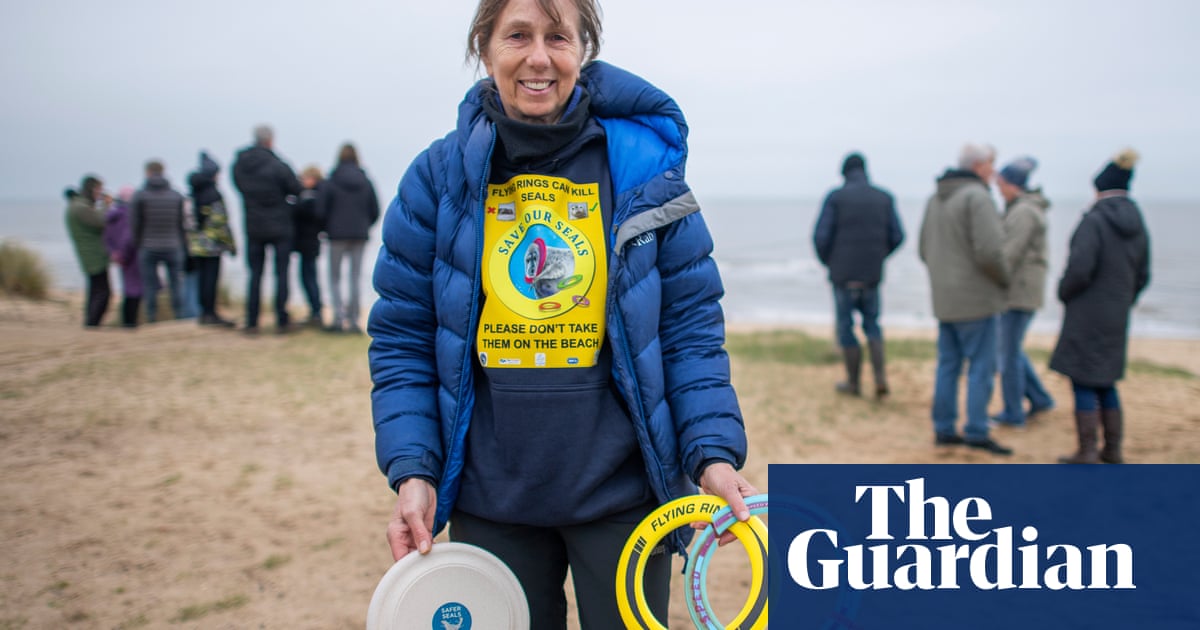There was an incident seven years ago that changed my life. I saw an adult grey seal with a plastic pink flying ring toy so deeply embedded in her neck that she was practically dead. It was stopping her from feeding because it was digging into her and she couldn’t extend her neck – the wounds were horrific.
It broke my heart. From that moment on, I became obsessed with seals and protecting them from the dangers of plastic flying rings.
I first encountered seals – and began to love them – when I became a volunteer for RSPCA East Winch Wildlife Centre 15 years ago. The centre is the main facility in Norfolk for the treatment, rehabilitation and care of wild seals, and works with the charityFriends of Horsey Seals(FoHS) and its dedicated rescue team along the east coast. As a result, I have unusually close contact with Britain’s two protected species of seals:the grey seal and the harbour seal, feeding and helping to care for them and their pups.
We called that seal Pinkafo. I discovered she wasn’t the first seal that FoHS had rescued who had a flying ring around her neck – another, called Frisbee, had been saved the year before. That had been thought to be a freak occurrence, but when Pinkafo came in, we realised it wasn’t.
Since then, unfortunately, a lot of seals have been seen and photographed caught in flying rings along Britain’s coastline. What seems to be happening is that these rings – costing as little as £1 – get lost or discarded on the beach then taken by the wind or tide into the sea. Young seals find them in the water and, being naturally curious, start to play – and that’s when they put their head through the middle. They can’t get the ring off and, as the seal gets bigger, the plastic digs deeper and deeper into its neck. Eventually, it dies from infection and starvation.
Every time a seal was spotted stuck in a flying ring, I woke up at night feeling distressed. In 2019, with the support of FoHS, I launched a public awareness campaign about the dangers of flying rings to seals. We distributed leaflets and posters along theNorfolkcoast from Great Yarmouth to King’s Lynn. I also started touring the beaches with a lifesize sculpture of a grey seal with a ring embedded in her neck.
In 2022, I sailed around Britain on my yacht for six months promoting my campaign at many of the ports and harbours I visited, and wrote a book, Sailing for Seals, about my journey. In 2023, I received aPoints of Light awardfrom the prime minister in recognition of my campaign to prevent needless suffering to seals.
The UK Seal Alliance, which represents seal groups across the country, is now supporting my campaign and its vice-chair Gareth Richardsrecently launched a petitioncalling for a ban on the import and sale of flying rings to protect seals. We have also been going into the shops that sell the rings and asking them to stop, and some of the big chains such as Sainsbury’s, Halfords, Tesco and the Entertainer have now pledged to swap to solid discs. But many retailers have refused to engage and thousands of rings continue to be sold across the country.
The good news is, Pinkafo and Frisbee managed to survive and, we think, give birth after the rings were removed and they were released back into the sea. But each time a seal is rescued and rehabilitated in this way, it costs charities such as the RSPCA an estimated £10,000 to £15,000.
We are launching a national campaign to raise awareness of the dangers of flying rings on 26 May, so that everyone can learn how to protect seals by swapping flying rings for seal-safe solid flying discs this summer, preferably non-plastic ones. Everyone can help our seals by making such a simple switch.
Jennifer Hobson is a seal welfare campaigner and the author ofSailing for Seals.As told to Donna Ferguson
